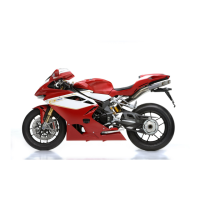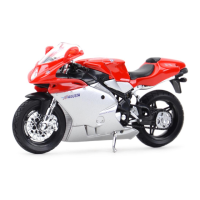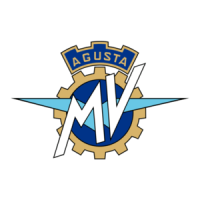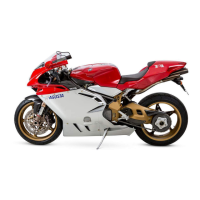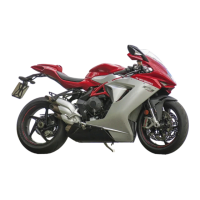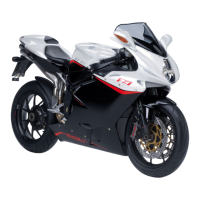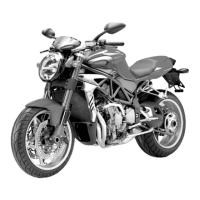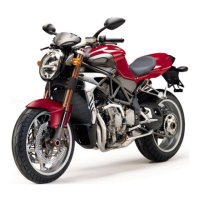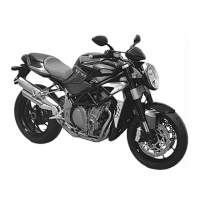Do you have a question about the MV Agusta F3 and is the answer not in the manual?
Explains the manual's importance for understanding motorcycle controls and features.
Details critical warnings about potential accidents, injury, or death.
Guides owners on reporting vehicle defects to NHTSA or Transport Canada.
Provides essential advice for safe motorcycle operation, including protective gear and visibility.
Lists crucial pre-ride checks to ensure the motorcycle is safe to operate.
Offers guidance on safe riding practices, gear selection, and hazard awareness.
Details maximum weight limits and the impact of load on motorcycle handling.
Identifies key controls and instruments on the motorcycle's handlebars and dashboard.
Details the functions of controls located on the left handlebar grip and switchgear.
Details the functions of controls located on the right handlebar grip and switchgear.
Describes the ignition switch positions (OFF, ON, LOCK) and steering lock.
Explains the gear shifting procedure and the optional "Quick Shift" function.
Introduces the dashboard instruments and warning lights activated by the ignition.
Explains the meaning and function of various warning lights on the instrument panel.
Describes the functions displayed on the digital instrument panel, such as speedometer and trip counters.
Provides basic information for operating the motorcycle, including break-in and starting.
Outlines the recommended break-in procedures for the engine, tires, and brakes.
Details the correct procedure for starting the motorcycle's engine safely.
Introduces the process for changing display modes and settings on the instrument panel.
Guides on how to navigate and select different operating modes on the display.
Provides instructions and safety warnings for refuelling the motorcycle.
Lists essential pre-ride checks to ensure the motorcycle's safety and reliability.
Presents schedules for periodic maintenance and checks based on mileage intervals.
Covers tire pressure checks, wear inspection, and replacement procedures.
Flowchart to diagnose and resolve issues when the engine fails to start.
Flowchart to diagnose and resolve issues when the engine unexpectedly stops while riding.
Flowchart to diagnose and resolve issues related to engine overheating.
Flowchart to diagnose and resolve issues indicated by low oil pressure warning light.
Flowchart to troubleshoot and resolve issues with non-functioning lights.
Provides a labeled diagram identifying major motorcycle components.
| Displacement | 798 cc |
|---|---|
| Frame | ALS Steel tubular trellis |
| Engine Type | Inline 3-cylinder, 4-stroke, 12 valves |
| Maximum Power | 148 hp (110 kW) at 13, 000 rpm |
| Maximum Torque | 88 Nm at 10, 600 rpm |
| Transmission | 6-speed |
| Front Suspension | Marzocchi, adjustable rebound and compression damping, spring preload |
| Rear Suspension | Sachs, single shock absorber, adjustable rebound and compression damping, spring preload |
| Front Brake | Double floating disc with Brembo 4-piston calipers |
| Rear Brake | Single disc with Brembo 2-piston caliper |
| Dry Weight | 173 kg |
| Fuel Tank Capacity | 16.5 L |
| Tires Front | 120/70 ZR17 |
| Tires Rear | 180/55 ZR17 |
| Wheelbase | 1, 380 mm |
| Seat Height | 805 mm |

